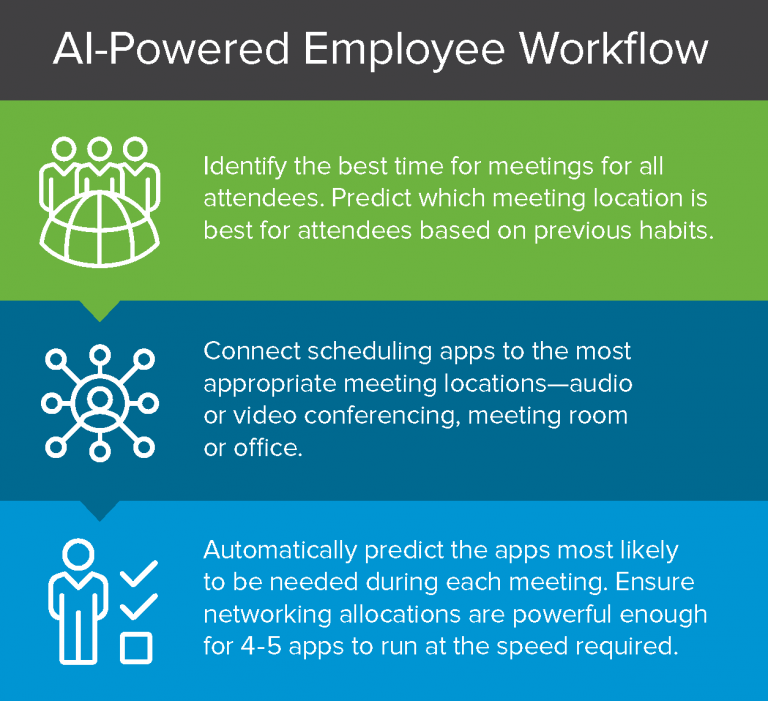- Video conferencing has become a tool for collaborations.
- AI in video conferencing can help maximize productivity by making these platforms incredibly effective.
- Utilize computer vision, data analytics, NLP, and visualization technologies and they are transforming video meetings into smart video meetings.
- AI is making video conferencing a more reliable and strategic resource for businesses.
Video conferencing has gone beyond large boardrooms to become a tool for collaborations in common places. In the span of a few months, both AI and video conferencing have helped businesses grow and connect to employees and each other without compromising on productivity.
It has become a key component for maximizing productivity in many businesses, governments, and the public sector. According to a report, it is expected to reach a CAGR of 9.9 percent from 2020 to 2027.
For instance, let’s say you just completed an hour-long presentation which took you weeks to prepare. But after the meeting, you suddenly realize that no one was taking notes. All your efforts and important insights have been lost.
Then your colleague shares an amazing feature of video meeting room technology which allows you to equip your presentation with AI-based voice analytics. This feature enables you to go back through the transcription. It even allows you to jump to a specific interaction midway.
This helps you access the details of your presentations and saves the day.
Here are some more reasons to use AI in video conferencing today?
- It makes video conferencing incredibly effective especially for marketing, sales, and customer support teams.
- The application of AI in marketing platforms can simplify the process
- AI-powered tools are intuitive in nature.
- AI and automation features when integrated with tech and marketing solutions can prove to be very effective.
Top companies employing the latest AI trends are Adobe, Salesforce, Oracle, IBM, Genesys, Zendesk, and SAP. Companies utilize AI to find customers with the help of email marketing, automation, social media, CRM, and customer data and analytics.
According to a survey by Zoom, as much as 73 percent of users believe that the AI will have a positive impact on their physical and virtual meetings.
Some of the most popular video meeting room technology platforms are constantly advancing in the fields of AI such as Machine Learning, Deep Learning, Neural Network, and Voice Search are:
- Zoom – 49.80%
- Microsoft Teams -21.30%
- Webex Meetings – 7.60%
- Google Hangouts Classic – 4.70%
- Skype – 3.80%
- GoToMeeting – 3.30%
- Blackboard Collaborate – 2.80%
- Adobe Connect – 2.60%
- BlueJeans – 2.40%
- Lifesize Video Conferencing – 1.60%
Booming demand has increased competition which in turn has forced the video meeting room technology platforms to increase their functionality and simultaneously enhance user experience.
Hence, they are intensively leveraging AI in video conferencing as its advancements can improve the user experience. The AI-powered tool can support workflows and enhance engagement.
Some of the reasons are as follows:
- Schedule meetings based on all attendee’s radical personalization
- Automated AI-based API synchronization can enrich web-based meetings
- Ensuring network connections for enhanced user experience
- Auto-generated personalized notes

As platforms dive deeper into the world of AI to utilize other data science technologies including computer vision, data analytics, NLP, and visualization technologies they are transforming meetings into smart meetings.
So let’s understand four ways AI is enhancing video conferencing tools.
1. AI-driven insights
AI can significantly enhance video meeting room technology. AI integrated video conference meetings will able to manage regular meetings more efficiently by automating simple tasks like:
- Automating post-meeting updates
- Scheduling calls and sends meeting details
- Suggest important documents
- Suggest changes during the presentation
- Auto-notifying attendees about the changes
2. Natural Language Processing
The integration of NLP tools can enable video conferencing platforms to enhance the user experience by enabling text-based solutions. Other advantages will include:
- Automated report generation
- Automatic meeting transcription generation
- Auto muting attendees during presenting
- Auto-adjusting audio quality
- Translating conversation in different languages
- Automatically suppressing echo
- Removing background noise
There were some of the key enhancements of AI-powered NLP tools. It can also enable virtual assistants and chatbots to enable users to operate meetings with voice command
3. Computer Vision
Computer vision can allow computers to see though uses cameras which can contribute enormously in enhancing the visual experience. Here are a few ways in which computer vision can enhance user experience:
- Individually tracking and tagging of participants
- Improvising the attendee background
- Gaze correction
- Controlling the background environment
- Driving intelligent color and light correction
- Auto detecting visual issues and optimize the light balance
- Tracking human figures by automatically pan, tilt, zoom, and widening camera
For instance, computer vision is mostly focused on autonomous cars. The integration of computer vision in video conferencing technology with AI can drive real-time modifications by auto-detecting visual issues, network issues, and optimize light balance.
4. Machine learning
AI holds the promise of providing the security and privacy of the participants. Most participants face trust issues while sharing confidential information during a group call. The same information is communicated easily during face-to-face interactions:
- Security and privacy of the participants
- Detect network or web breaches
- Secure confidential information shared during the conference
- Improve media quality
- Enable remote work and cross-company collaboration
How will AI make video conferencing more efficient in the future?
 Artificial intelligence is on its way to make some of the biggest advances in enhancing the quality of communications in the workplace. Some experts say the next frontier of video conferencing with AI will be on how it can support decision making.
Artificial intelligence is on its way to make some of the biggest advances in enhancing the quality of communications in the workplace. Some experts say the next frontier of video conferencing with AI will be on how it can support decision making.
It will simplify the valuable information aggregated from calls both video and audio and VOIP. This will expedite the discovery of problems and solutions while increasing efficiency.
For instance, it will eliminate the need to record calls for quality assurance and training purposes. Rather, AI will now provide critical data insights from the voice and video recording.
Meaning it will allow a call handler to offer more relevant advice in real-time.
Similar AI-powered technologies that are being replicated in the workplace have the potential to learn data. This will allow participants in a certain meeting to rely on a transcription that records pertinent points. It will automatically send notifications on things such as elapsed time, participant, and who is presenting.
Frost & Sullivan talks about how AI in video conferencing can bring more reliability by performing predictive analytics in the meeting room.
It can monitor networks and endpoints while scanning for performance anomalies and take corrective actions. AI in video conferencing can ultimately drive conference rooms and meetings smarter.
How AI can play a vital role in improving workflow through conferences?
- Identify the best time for all attendees for meetings
- Predict which meeting location is ideal for attendees
- Connecting apps to the appropriate meeting locations
- Categorize audio or video conferencing rooms based on the availability of rooms in offices
- Auto-predict apps which will be required during a conference
- Allocating network that is powerful enough to run 4-5 apps
In conclusion, these are four important features of how AI is shaping the future of video meeting room technology. Businesses using AI-based video communication tools and systems have observed that AI-powered apps are more useful than traditional ones.
These AI tools are resilient and flexible when it comes to adapting to new technological changes as per industrial requirements. AI in video conferencing is taking an active role in improving productivity as it is the key to business success.
The important take away:
- It can help make meeting intelligent and contextual
- Advance with AI trackers especially for employee mobility
- Replace unnecessarily customer support workflows by using chatbots
- Making web meetings a better experience

Writing is food to my soul and the quote that inspires me to keep learning is “Learning never exhausts the mind” by Leonardo da Vinci. Tech Research Online has given me a platform to do just that, I learn and I write, and then I learn a little more.
